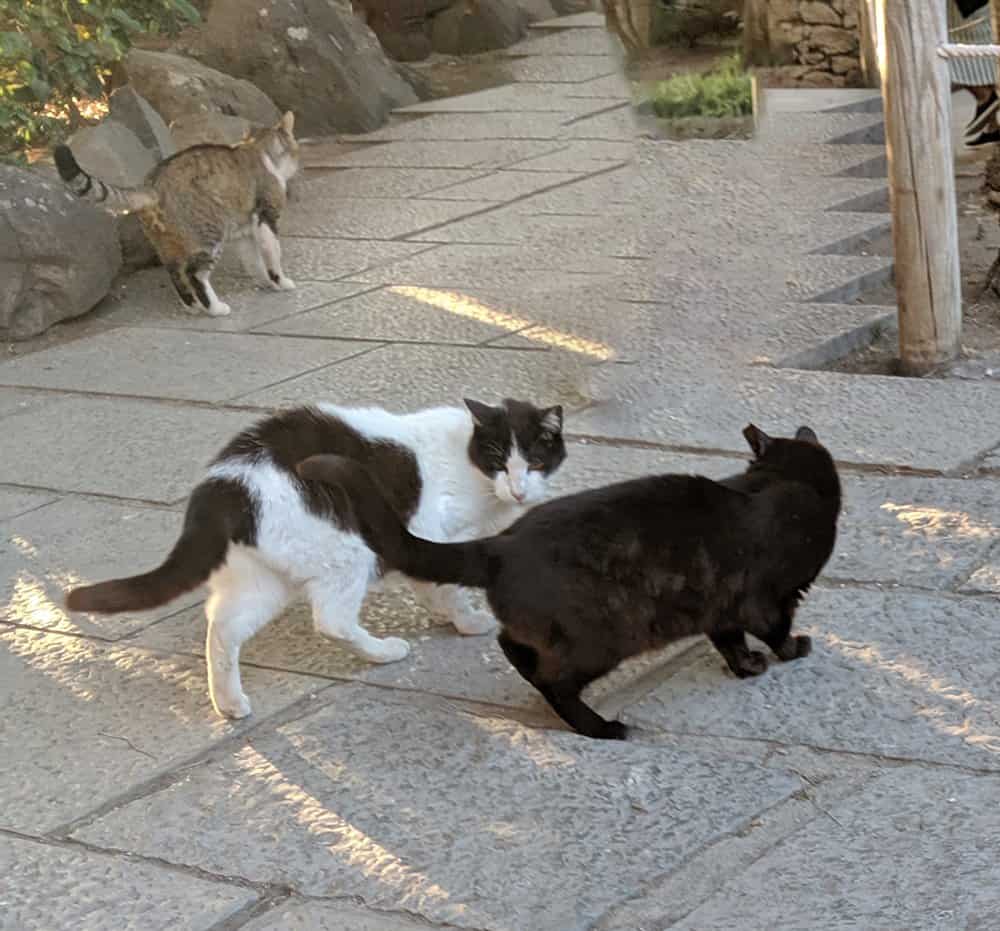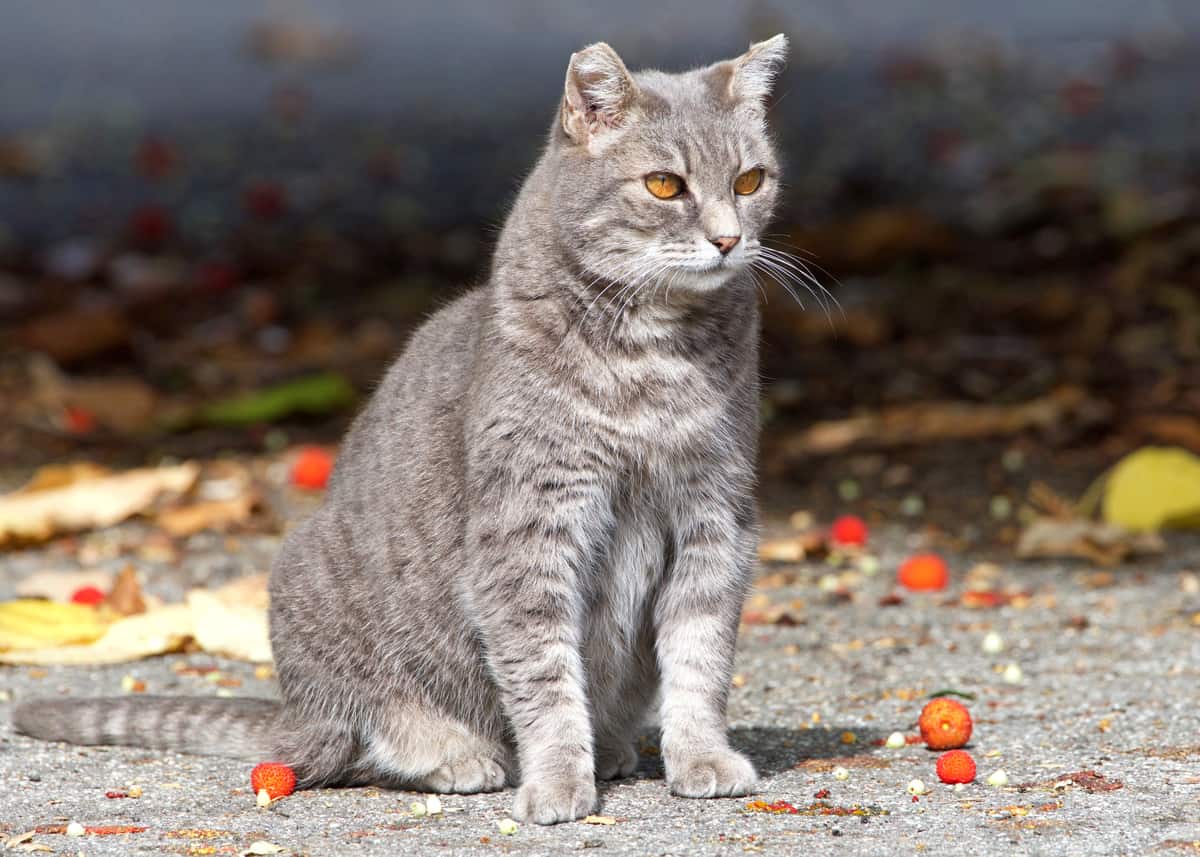There are a lot of unowned cats in the world.
Estimates of how many stray and feral cats there are in the United States varies greatly. The number of estimated unowned cats in the US. ranges between 30 and 70 million (Rowan et al., 2019).
In the United Kingdom, a citizen science project estimated that there are about 250,000 unowned cats roaming urban areas.
What is the Difference Between a Feral and Stray Cat?
A feral cat is a cat that has never lived in close contact with humans. Feral cats are unsocialized with humans and will not let you near them out of fear.
A stray cat is a cat that was once owned by humans but has either been abandoned or has gotten lost from their owner.
What are Community Cats?
Community cats, as used by the ASPCA and other organizations, is a way to refer to free-roaming feral and stray cats that have no owners.
What are Garden Cats?
Garden cats are semi-socialized or feral cats that are completely outdoors that are cared for by individuals around their homes.
The intent is to give these cats a safe outdoor space with a steady supply of food and water as well as an enclosed sleeping space to live out their lives.
Garden cats are also sometimes referred to as barn cats.

What is Trap-Neuter-Return?
Trap-Neuter-Return is the act of capturing feral and stray cats, neutering them, and then returning them to the outdoors to prevent continued breeding of these cats. Neutering feral and stray cats has also been shown to reduce incidents of fighting among these cats.
Trap-Neuter-Return-Monitor takes this process one step further by continuing a proactive management of those feral and stray cats. Caretakers of feral cats will continue to feed them and provide medical help when necessary.
What Does it Mean When a Cat Has a Notch in Their Ear?
You may notice feral and stray cats that have a notched ear. Known as ear-tipping, a cat with a portion of one of their ears that has been clipped is a sign that the feral or stray cat has been spayed or neutered.
Done by a vet at the time of spaying or neutering the cat, the procedure creates a visually clear sign to future rescuers and animal control that the cat has already been sterilized.

How Many Kittens Can an Unspayed Female Cat Produce?
There are some alarmist statistics out there about how many offspring an unaltered female cat can produce. One particularly high statistic is the claimed that one female and her offspring could produce as many as 420,000 cats over seven years. Is this true?
One statistician says emphatically, “no”. In 2006, Wall Street’s “The Number Guy” Carl Bialik consulted with veterinarians and wildlife management to calculate how many kittens could originate from one female and her offspring.
The number? A lot less than 420,000. Bialik calculated a range of between 98 and 5,000 offspring.
In reality, the mortality rate of kittens born to feral cats is 75% (Nutter, Levine, and Stoskopf, 2004). The research also found that female cats produce on average six kittens per year. These two factors greatly restrain the cumulative amount of cats a female and her offspring could produce over seven years.
While the reproductive capacity of free-roaming and unaltered cats is high, it is no where near the 420,000 offspring over seven years statistic.
Feral Cats Roam More Than House Cats
Feral cats tend to roam over a larger area as compared to house cats. A study (Horn et al., 2011) found that feral cats can regularly roam over hundreds of acres compared to the average range of just 4.9 acres for house cats.
Feral cats tend to be more active than house cats, spending 14% of their time hunting or running (high activity) compared to the 3% for house cats. The need to search for food drives the higher range and activity levels of feral cats.
References
A closer look at community cats. (n.d.). ASPCA. https://www.aspca.org/helping-people-pets/shelter-intake-and-surrender/closer-look-community-cats
Bialik, C. (2006, October 12). Trying to herd a cat Stat. WSJ. https://www.wsj.com/articles/SB116058075161889442
Horn, J. A., Mateus‐Pinilla, N., Warner, R. E., & Heske, E. J. (2011). Home range, habitat use, and activity patterns of free‐roaming domestic cats. The Journal of Wildlife Management, 75(5), 1177-1185. https://doi.org/10.1002/jwmg.145
McDonald, J. L., & Skillings, E. (2021). Human influences shape the first spatially explicit national estimate of urban unowned cat abundance. Scientific Reports, 11(1), 20216. https://doi.org/10.1038/s41598-021-99298-6
Nutter, F. B., Levine, J. F., & Stoskopf, M. K. (2004). Reproductive capacity of free-roaming domestic cats and kitten survival rate. Journal of the American Veterinary Medical Association, 225(9), 1399-1402.
Rowan, A. N., Kartal, T., & Hadidian, J. (2019). Cat demographics & impact on wildlife in the USA, the UK, Australia and New Zealand: facts and values. Journal of Applied Animal Ethics Research, 2(1), 7-37.






